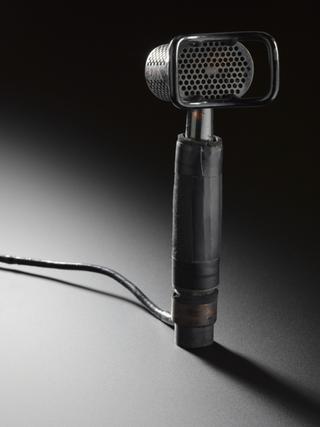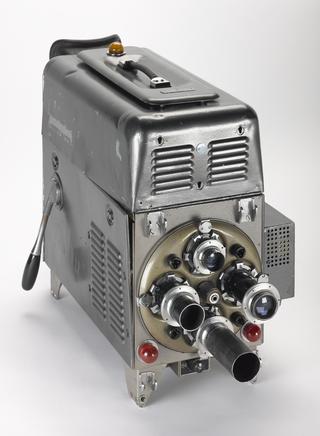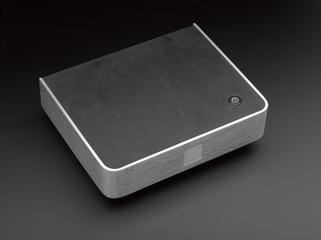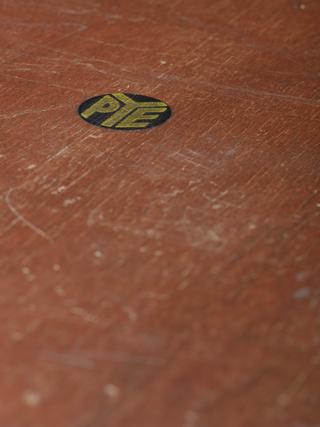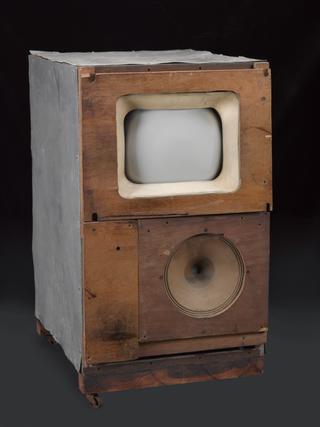
Round Electro-Dynamic Microphone
- Made:
- 1922-1923 in Chelmsford
- designer:
- Henry Joseph Round
Electro-dynamic microphone, by H. J. Round, Marconi Wireless Telegraph Company, 1922-1923.
Probably the only surviving example of a Round electro-dynamic microphone, 1922-1923. Early semi-experimental electrodynamic microphones worked along the same lines as a telephone receiver. A diaphragm within the microphone would vibrate when sound hit it, with the vibrations transmitting down a cable to be amplified and broadcast or recorded for use later. The diaphragm in this type had a poor frequency response though. Round attempted to get around this by using four microphones each with a diaphragm that vibrated at a different frequency placed in a row in a big wooden box in the Marconi House Studio. The signals from all four mics needed to go through ten stages of amplification before the signal was considered good enough for broadcast. Each individual mic was very heavy as well, weighing in at 20 pounds, which is 1 stone 4lbs or 9kg.
‘Like a howitzer battery,’ Eckersley wrote in Popular Wireless, ‘four great round iron contraptions, all over screws, precariously balanced on the top of the ungainly pile'. Packing washers beneath these same screws varied from bits of yesterday’s newspaper folded in a wad to chunks of fibre collected from the scrap-box, and finally, quintessence of neatness, two sixpences shone in undiminished glory on the ”S blaster”, as the high note magnetophone was affectionately called.
Details
- Category:
- Television
- Collection:
- BBC Heritage Collection
- Object Number:
- 2015-5012
- Materials:
- steel (metal), copper (metal) and electronic components
- Measurements:
-
overall: 260 mm 110 mm,
- type:
- microphone
- credit:
- BBC Collection
